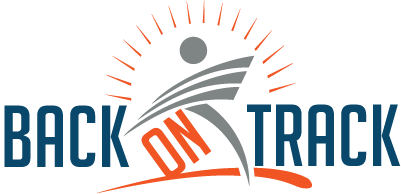Can't Stand Your Business Partner's Quirks? Here's Why They're Saving Your Business
- Motty Chen

- Feb 16
- 4 min read

Have you ever noticed how the very qualities that make someone exceptional can also be the ones that drive you a little crazy?
I have been part of a partnership where this was so pronounced, and I have seen it over and over with my clients. It's fascinating—and sometimes frustrating—how our strengths and weaknesses are often just different sides of the same coin.
In business partnerships, this duality can either be a source of conflict or a wellspring of innovation. Let's explore how embracing the whole package of traits in ourselves and our partners can lead to stronger, more dynamic collaborations.
The way you do one thing is the way you do everything
The Two Sides of Every Trait
Every core behavior we possess can show up in both positive and negative ways. You can't have one without the other because the way you do one thing is pretty much the way you do everything.
For example:
The Charismatic Communicator: Think about a salesperson who's a natural at building relationships. They're outgoing, persuasive, and great at closing deals. But the flip side? They might struggle with routine office work or tasks that require solitude and focus. Their energy comes from interaction, so sitting quietly at a desk can feel stifling.
The Process Enthusiast: Then there's the person who excels at following procedures. They're thorough, detail-oriented, and deliver consistent results. However, they might find it challenging to adapt when circumstances change or when flexibility is required. Their strength in sticking to the plan can make it hard to pivot when needed.
The Loyal Traditionalist: Consider someone who always keeps their promises and values loyalty above all. They're reliable and steadfast, which is fantastic. But they might also be resistant to new ideas, appearing stubborn or closed-minded because they prefer the comfort of the familiar.
Why We Clash with Our Complements
In business, we often seek partners who have strengths that complement our own. It's a smart move—pairing up with someone whose skills fill in our gaps can create a powerhouse team. But here's where things get tricky: those complementary traits we admire may come bundled with behaviors that test our patience.
If we don't recognize and accept this duality, conflicts are bound to arise. We might focus on the negatives, forgetting that they're intrinsically linked to the positives we value. It's like wanting the light without the shadow—it just doesn't work that way.
Theories That Shed Light on This
Several schools of thought help explain this phenomenon:
The Big Five Personality Traits: This psychological model outlines five broad dimensions of personality—openness, conscientiousness, extraversion, agreeableness, and neuroticism. Each trait has its upsides and downsides. For instance, high conscientiousness means being organized and dependable but can also lead to inflexibility.
Yin and Yang: In Chinese philosophy, Yin and Yang represent how opposite forces are interconnected and interdependent in the natural world. One gives rise to the other, and together, they create a harmonious whole. This concept illustrates that strengths and weaknesses are not separate but part of a unified system.
Transformational vs. Transactional Leadership: In leadership theory, transformational leaders inspire and motivate but might overlook the practical details. Transactional leaders focus on structure and efficiency but may lack vision. Both styles have strengths and weaknesses, and effective leadership often requires a balance of the two.
The Power of Self-Awareness
Understanding that every trait has its dual nature is a game-changer.
For Yourself: Recognizing your own strengths and their accompanying weaknesses helps you leverage your talents better and address areas that might need growth. It fosters humility and continuous learning.
For Your Partnerships: Appreciating this duality in others allows you to set realistic expectations. Instead of being blindsided by a partner's "flaws," you anticipate them as part of the strengths you value.
Transforming Conflicts into Innovation
When conflicts arise—and they will—view them as opportunities rather than setbacks.
Here's how:
Open Dialogue: Encourage honest conversations about each other's working styles. Acknowledge the dual nature of your traits openly.
Leverage Differences: Use your differing approaches to tackle challenges from multiple angles. For example, combine the visionary ideas of a transformational thinker with the practical planning of a transactional one.
Build Trust: Accepting each other wholly builds trust. When partners feel understood and valued for who they are, they're more likely to contribute fully and collaborate effectively.
Putting It into Practice
Suppose you're a big-picture thinker who loves brainstorming new ideas, and your partner is detail-oriented, making sure nothing falls through the cracks. Instead of getting frustrated when they ask for specifics or when you propose yet another new concept, recognize how these traits complement each other.
By embracing both perspectives:
Innovative Ideas Get Implemented: Your creativity combined with their practicality means not only generating ideas but also seeing them through to fruition.
Balanced Risk-Taking: Your willingness to take risks is tempered by their cautious planning, leading to smarter business decisions.
Embrace the Whole Package
At the end of the day, accepting that strengths and weaknesses are intertwined allows for more authentic and effective partnerships. It's about seeing the value in the complete person, not just the parts that immediately benefit us.
Let's Turn Challenges into Opportunities
So next time you feel friction with a business partner, take a step back. Ask yourself:
What strength is connected to this challenge?
How can we use both our traits to create a better outcome?
By shifting your perspective, you transform potential conflicts into opportunities for innovation and growth.
Your Thoughts?
Have you experienced this duality in your own partnerships? How have you navigated the ups and downs that come with it? Share your stories and let's learn from each other. After all, embracing the full spectrum of our traits not only strengthens our partnerships but also leads us to better solutions we might never have discovered on our own.




Comments